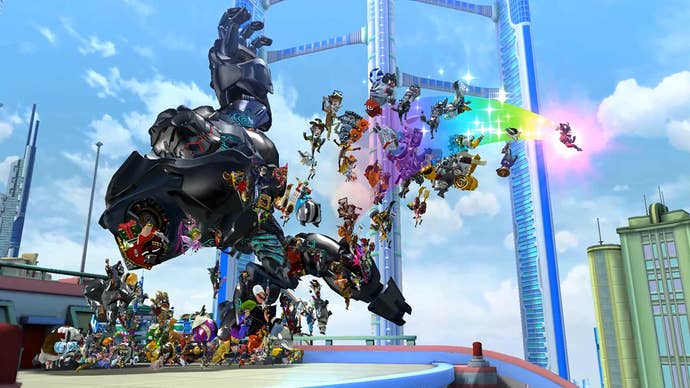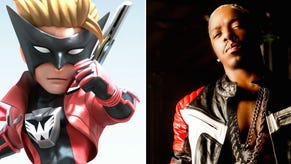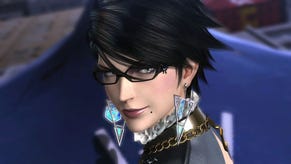The Wonderful 101 Primer: What You Should Know About PlatinumGames' Latest Port
The Wonderful 101 bombed on the Wii U. Here's why the Remastered version of the game is generating a lot of excitement.
This article first appeared on USgamer, a partner publication of VG247. Some content, such as this article, has been migrated to VG247 for posterity after USgamer's closure - but it has not been edited or further vetted by the VG247 team.
The Wonderful 101: Remastered is out today, and it's a game that garners curiosity and questions. Its original release on the Wii U in 2013 failed to attract much attention despite its cool ideas, yet the recent Kickstarter campaign to fund a modern re-release breezed past its initial goal, and then some.
The Wonderful 101 is an action-adventure game from PlatinumGames that was originally a Wii U exclusive. It's an off-the-wall title that owes its riotous colors and bold heroes to Japan's action-heavy sentai shows. It also owes a creative debt to Nintendo's Pikmin. Wonderful 101's heroes have the power to anoint citizens as temporary heroes, which gives them the ability to swarm over enemies and shape themselves into tools and weapons. It's not the same as plucking Pikmin's sentient flora out of the ground and commanding them to climb on foes, but PlatinumGames' inspiration is evident.
The Wonderful 101 isn't celebrated solely for its unique hero-gathering concept and its bright energy. It's also remembered for being a game tailored specifically for the Wii U's unique hardware. Players used the Wii U gamepad to draw rough outlines of the weapons wielded by the game's main characters, the "Wonderful Ones." Drawing a circle lets the hero Wonder-Red form a giant fist fit for pummelling bad guys. Drawing a line turns the citizen swarm into a sword for Wonder-Blue. Wonder-Pink receives a whip when the player draws a squiggle, and so on. Unfortunately, The Wonderful 101's imaginative concept didn't convince many people to buy a Wii U. When the beleaguered console sank under the waves, it dragged The Wonderful 101 down with it.
Years later, the success of the Switch has the gaming community calling out for ports of quality Wii U games that suffered untimely deaths. Tokyo Mirage Sessions #FE is one example, and now The Wonderful 101 is another. Last winter, a Kickstarter campaign by PlatinumGames raised over $2.1 million to put a remastered version of the game on Switch, PlayStation 4, and PC.
How did a once-obscure game generate enough goodwill to drive a million-dollar Kickstarter? We look back on The Wonderful 101 and examine its history and its long-term appeal.
What is The Wonderful 101?
The Wonderful 101 was developed by PlatinumGames and published for the Wii U by Nintendo. It's directed by Hideki Kamiya, who developed a reputation for making standout games with his work on Capcom's Okami (an adventure game where players control a wolf-god that creates life in her wake) and Viewtiful Joe (a game where players transform into a superhero to fight off an alien threat).
The Wonderful 101 takes place in a fictional world threatened by an invading alien force called Gethjerk. While every citizen has latent superpowers, they only activate if they're recruited to serve under "The Wonderful Ones," the main characters that carry the game's story. The Wonderful Ones have color-coded callsigns, e.g. Wonder-Red (the leader of The Wonderful Ones), Wonder-Blue, Wonder-Yellow, and so on. The Wonderful Ones are charged with saving the world from Gethjerk's invading monsters and mechs, which they do with the aid of their "Unite Morph" powers.
In the vanilla release of The Wonderful 101, Unite Morphs make heavy use of the Wii U gamepad. To start with, Unite Morphs are only possible when the Wonderful One controlled by the player has a following of temporary superheroes. Groups of citizens instantly become Wonderful when the player draws a line around a cluster. Once they're supplied with warm bodies, players can draw lines that represent the Wonderful Ones' weapons. Thus, the stragglers surrounding the Wonderful Ones become a sword when the player draws a line, or a pair of claws when they draw a zigzag. Properly equipped, the Wonderful One can wail on foes. Leftover upgraded citizens can be ordered to swarm over enemies and stun them, making them much more vulnerable to attack.

Since The Wonderful 101 is inspired by sentai—a genre of Japanese action shows where color-coded superhero teams beat up bad guys (Power Rangers is anglicized sentai)—there are tons of cinematic quicktime events threaded throughout the game. Most of the time, players guide The Wonderful Ones through isometric levels, but there are lots of moments where the heroes find themselves crawling on the giant metal hide of an alien mech, and so forth. In these heated moments, players are called on to draw The Wonderful Ones' weapons in the space of a few seconds until the evil is defeated and the scene calms down again.
The Wonderful Father, Hideki Kamiya
The Wonderful 101 was created by Hideki Kamiya, one of the founders of PlatinumGames. Kamiya's work started turning heads long before the formation of PlatinumGames, however. When he joined Capcom in 1994, he directed the critically acclaimed Resident Evil 2, and went on to create the wild Devil May Cry action series. Kamiya is infamous for being a little wild himself: He argued constantly about game design with his superiors at Capcom. Shinji Mikami, a fellow former developer at Capcom and the director of the original Resident Evil, once told Kamiya "You're the dark horse of the new recruits. You're either going to fail spectacularly, or you're going to be a huge success."

Kamiya's "success" depends on one's outlook. From a financial viewpoint, the games Kamiya made with Capcom's Clover Studios weren't million-selling blockbusters. From a creative standpoint, though, Kamiya has few equals in the industry. In addition to The Wonderful 101, he gave us Viewtiful Joe and Okami—titles that can be identified as Kamiya's kids as soon as you set eyes on their uniquely-drawn graphics and hear the characters belt out snarky one-liners.
Most of Kamiya's games are based around concepts pioneered by previous games, but he usually builds on a solid foundation. For example, Okami is an action-adventure game about a wolf, and while it plays much like The Legend of Zelda: Twilight Princess (another game where players often fight in a canid form), it undeniably has a bold, beautiful personality of its own. Though the initial release of Okami sold modestly, it was highly praised by critics for its lovely watercolor-style graphics, which brought the game to life like a Japanese fairy tale.
Kamiya left Clover and founded PlatinumGames in 2007 alongside other Clover alumni, including CEO Atsushi Inaba. In 2009, Kamiya made one of his best-known works: Bayonetta, an action-adventure game published by Sega. The Bayonetta series is famous for its intense, surreal fights against Biblical angels, but the titular heroine, the sleek and catlike Umbra Witch Bayonetta, has arguably become the symbol of PlatinumGames even though she was initially owned by Sega, and then Nintendo. Kamiya designed Bayonetta after he felt he'd "already done what there is to be done" with his male characters, including Resident Evil 2's Leon and Viewtiful Joe.

To Kamiya's credit, Bayonetta's penchant for breaking barriers and doing the impossible in her games has helped cement Kamiya's reputation as a creative thinker and a risk taker. That patented PlatinumGames energy brought The Wonderful 101 to life in 2013, and even though it ultimately failed, its parentage and reputation for being fun and strange kept its memory alive long enough to see it resurrected in 2020.
The Bad Ol' Wii U Days and a Wonderful Revival
Kamiya had initially hoped to create a sort of "Nintendo All Stars" game where classic Nintendo characters like Mario, Peach, Yoshi and especially F-Zero's Captain Falcon would fill roles similar to The Wonderful Ones, led by an original character. The pitch fell through but came back to life as something closer to The Wonderful 101 as we know it.
The Wonderful 101 wasn't born as a Nintendo exclusive, but it eventually became one when PlatinumGames realized the Wii U's gamepad would be perfect for drawing The Wonderful Ones' Unite Morph shapes. Nintendo also gave Kamiya design suggestions without encroaching on his creative freedom. Kamiya recalls one example where Nintendo assisted him when he was unhappy with the game's art style.
"I wasn't really satisfied with it, and Nintendo said 'why don't you change it? Why don't you find something with a broader appeal,' and the result's what you see now—it's a bit brighter, and it feels like action figures moving about in the game," Kamiya told Eurogamer in 2013. "I like the fact that Nintendo didn't ask to change too much—the creativity of Platinum was totally respected by Nintendo throughout the process."

Despite praise from critics, The Wonderful 101's sales were quite poor. That's not surprising, as things were already looking dire for the Wii U by 2013. The console gradually garnered a reputation for good, imaginative games, of which The Wonderful 101 was one, but it was never enough to get consumers to jump on board with Nintendo's unpopular hardware.
The Wii U's failure and the Switch's success sprouted the "port begging" trend, wherein Switch owners "beg" publishers to port quality Wii U games they missed out on. PlatinumGames decided to give The Wonderful 101 a second chance by starting a Kickstarter campaign in February for The Wonderful 101: Remastered. It blew past its initial goal of ¥5,425,000 (about $50,300 USD) in a matter of hours and garnered a final tally of ¥235,320,528 (about $2,184,000 USD).
Kamiya is happy that so many people are seemingly eager to give The Wonderful 101 another chance, even though the initial release is seven years old. "In the end, we got more support than I had ever dreamed of, and I think it's become a happy ending for both us and all of the backers," he wrote after the campaign successfully concluded.
The Wonderful 101 has a second chance to impress people, a rarity for a fast-moving industry that often buries noteworthy games without a glance. The overwhelming success of The Wonderful 101's Kickstarter campaign isn't just proof that people are super-eager to give The Wonderful 101 a try, however. It's a sign of good faith from PlatinumGames' growing fanbase, and for Kamiya in particular. Even though only a handful of his games can be considered big financial successes, he's never compromised on his wilder ideas or toned down his imagination to generate games that are immediately marketable. He's also never dialed back his rough Twitter demeanor, which frequently includes rampant blocking sprees, and that makes his fans love him even more—though a sizable percentage of that base has certainly been blocked from his account by now.

The Wonderful 101: Remastered is also a new beginning for PlatinumGames, which strives to self-publish more of its own original content while also working on licensed games for publishers. "We're going to work hard on every one of our games from here on out to make sure we'll always keep being a company that you can feel proud about," Kamiya wrote in a Kickstarter update. "Thank you so very much for supporting us in this small yet important first step."
The digital iteration of The Wonderful 101: Remastered is available now on Switch, PlayStation 4, and PC.







